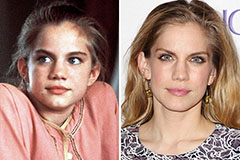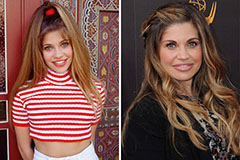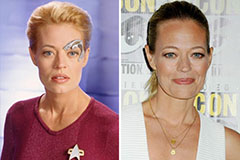In the digital age, content creation has evolved into an intricate art form, one that requires not just technical skills but a deep understanding of how various mediums work together to tell compelling stories. Today, creators are merging music, photos, and digital art to craft multi-sensory experiences that resonate with audiences in profound ways. Whether it’s for social media, marketing campaigns, or personal projects, the fusion of these elements is helping shape a new era of storytelling. In this article, we explore how combining music, photos, and digital art can transform content and enhance engagement.
The Power of Visual Storytelling
Visual storytelling has always been a potent way to communicate, whether through traditional methods like painting and photography or through modern digital formats. Photos, in particular, capture moments in time, encapsulating emotions, landscapes, and narratives within a single frame. When paired with other art forms, photos have the potential to evoke even stronger emotions and tell more intricate stories.
The advent of digital art has further expanded the possibilities. Artists can now manipulate and combine images, textures, and colors, creating scenes that might have been impossible to achieve through traditional photography. Digital art can transform simple photos into intricate pieces of visual storytelling that can evoke deeper meanings and emotions.
Music as the Emotional Catalyst
Music has always been deeply tied to emotions. It has the unique ability to elevate the impact of visual content, adding depth and meaning to the images or scenes in front of us. Music helps set the mood, guiding the emotional tone of a piece. Think of how a powerful film score amplifies the tension in a thrilling scene or how a soft melody can enhance the emotional weight of a heartfelt moment.
In content creation, music plays a vital role in engaging the audience. The right track can make a simple photo or animation feel alive, pulling the viewer into the story. The tempo, genre, and even the instruments used in the music can influence how the audience perceives the visuals, whether it’s adding a sense of urgency, tranquility, or joy. By carefully selecting or composing music that complements the images or digital art, creators can forge a connection between their audience and the content, fostering an immersive experience.
Combining Photography and Digital Art
While photography captures the essence of a moment, digital art can transcend reality, turning ordinary photos into something fantastical. The blend of these two mediums can result in powerful visual narratives that strike a chord with the viewer.
Digital manipulation of photographs has allowed creators to experiment with color grading, compositing, and illustration techniques, resulting in surreal landscapes, dreamlike imagery, or even abstract visuals. This integration often blurs the lines between the real and the imagined, inviting viewers to engage with the content on a deeper, more interpretive level.
For instance, a photographer may capture a stunning sunset, but with the use of digital art tools, they can enhance the colors, introduce mystical elements like floating objects or creatures, and create a scene that feels otherworldly. This fusion creates an entirely new layer of storytelling, one that invokes wonder, intrigue, and deeper reflection.
Music, Photos, and Digital Art: A Multisensory Approach
When you combine music, photography, and digital art, you create an immersive, multisensory experience. The interplay of sight and sound enhances the emotional impact of the story. Imagine a short video where a photo of a bustling city street comes alive with animated elements – glowing lights, swirling clouds, or the movement of people – while an upbeat electronic track pulses in the background. The photo alone might convey a simple moment, but with the added elements of animation and music, the image transforms into a dynamic, engaging story.
This multisensory approach is particularly effective on social media platforms, where audiences consume content quickly and often without much focus. The combination of music and dynamic visuals helps capture attention, turning fleeting moments into compelling stories that encourage engagement and sharing. Whether it’s through video, animated images, or art interactive designs, this blending of elements is a key tool for modern content creators looking to stand out.
Enhancing Engagement and Interaction
The integration of music, photos, and digital art doesn’t just create a visually appealing product; it also has the potential to boost engagement and interaction. Interactive storytelling, which involves audiences in the process, can elevate a piece of content. For instance, creators can use music to set the tone, display a photo, and invite viewers to interact by clicking or swiping to reveal new digital art layers or elements. This interactive format encourages participation and fosters a deeper connection with the content.
Platforms like Instagram, TikTok, and YouTube have introduced features that support this kind of integrated storytelling, allowing users to explore the connection between music, visuals, and art in creative ways. The ability to add soundtracks to photos or integrate augmented reality elements into digital art opens up endless possibilities for creators to experiment and connect with their audience in innovative ways.
The Future of Content Creation
As technology continues to evolve, so too does the art of content creation. Virtual reality (VR) and augmented reality (AR) are set to revolutionize how we experience the fusion of music, photos, and digital art. These technologies will allow creators to craft fully immersive experiences, where viewers can interact with the music and visuals in real-time, altering the story as they go.
Moreover, advancements in AI and machine learning are enabling creators to push boundaries further, creating content that can adapt based on the viewer’s preferences or behavior. Imagine content that adjusts in real-time, changing its visuals or music based on the user’s emotional response or actions.
Conclusion
The art of content creation is a dynamic and ever-evolving field, where the combination of music, photos, and digital art is reshaping how stories are told. By merging these mediums, creators can forge deeper emotional connections with their audience, offering a multisensory experience that leaves a lasting impact. As technology continues to progress, the possibilities for innovative, engaging visual stories are limitless. Whether it’s through enhanced photography, digital manipulation, or music-driven narratives, the future of content creation promises exciting new ways to engage, inspire, and connect.
 Anna Chlumsky Then & Now!
Anna Chlumsky Then & Now! Michelle Pfeiffer Then & Now!
Michelle Pfeiffer Then & Now! Danielle Fishel Then & Now!
Danielle Fishel Then & Now! Catherine Bach Then & Now!
Catherine Bach Then & Now! Jeri Ryan Then & Now!
Jeri Ryan Then & Now!